Plan for new era fosters M&A market
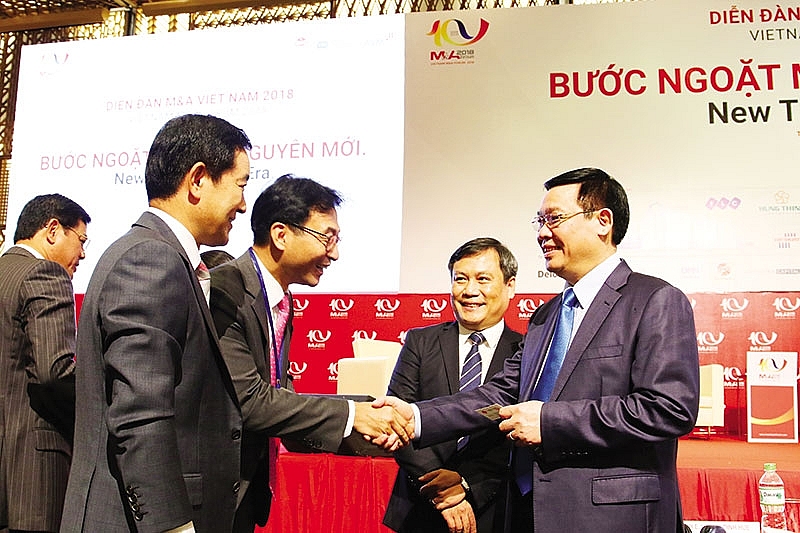 |
| Investors met with Deputy Prime Minister Vuong Dinh Hue (right) at Vietnam M&A Forum 2018 with the focus of discussing the future growth of Vietnam’s M&A market, Photo: Le Toan |
Choosing the right investors
At last week’s Vietnam M&A Forum 2018 in Ho Chi Minh City, senior officials, experts, businesses, and investors discussed the future growth of Vietnam’s mergers and acquisitions (M&A) market.
After 10 years of booming M&A activities in the country and 30 years of foreign direct investment attraction, many believe that now is the time for Vietnam to map out a plan for the next phase of growth.
According to Minister of Planning and Investment Nguyen Chi Dung, in the new era, Vietnam will become much more selective about M&A inflows from overseas. Specifically, foreign investors should be willing to help with Vietnam’s environmental preservation plans and protecting Vietnam’s natural resources.
“We’d like to attract foreign investors that can connect well with Vietnam’s domestic companies. Technology transfer and co-operation is also key, as it is the basis of sustainable growth in the Industry 4.0 era,” said Minister Dung.
The minister said he is upbeat about the future of M&A in Vietnam, which he considers a more flexible process than direct investment.
To prepare for the next era of M&A inflows, the government is taking some big steps. First, deputy CEO of the State Capital Investment Corporation Le Song Lai noted that there are 140 state-owned enterprises (SOEs) slated for equitisation between now and 2020, including heavyweights Vinamilk and FPT Corporation. Decision No.1232/2017/QD-TTg, for the first time ever, has specified the name of these SOEs, as well as the anticipated amount and timeline of state withdrawals.
On the local level, Deputy Chairman of the Ho Chi Minh City People’s Committee Tran Vy Tuyen said that Vietnam’s biggest city is preparing for 39 SOE equitisations between now and 2020. In line with the national guidelines for new M&A transactions, Ho Chi Minh City will be very careful in selecting the right partners for its companies.
“We seek trustworthy and high-tech investors who can push our companies towards sustainable and long-term growth,” said Tuyen.
At the same time, the Vietnamese government is nurturing the stock market and striving towards emerging market status, providing investors with a liquid and transparent environment for both M&A inflows and exits.
Chairman of the State Securities Commission Nguyen Van Dung noted that the Securities Law is slated for revision in 2019, and regulators are pushing to implement the book-building method for SOE equitisation. This demand-based sale method is crucial to attract foreign investors in the new era.
Growing interest from foreign SMEs
In the past decade, there has been a growing number of big names from abroad involved in Vietnam-based M&A transactions. In the new era of growth, however, the M&A fever will extend to small- and medium-sized enterprises (SMEs) from overseas, according to international experts.
The trend is particularly prominent for Japanese and South Korean investors.
Jiun Park, senior deputy managing director at the Korea Trade Investment Promotion Agency (KOTRA), said that many South Korean SMEs have enquired about the process of doing M&As in Vietnam. Park called this “the third wave of investments from South Korea”, following the first wave conducted by conglomerates in labour-intensive industries and the second one by consumer goods companies.
“A characteristic of the third wave is strategic alliances between South Korean and Vietnamese companies. The South Korean partner can provide modern technology, while the Vietnamese side can help with brand presence, market share, and product distribution in Vietnam,” said Park.
The list of sectors is also more diverse than before, now expanding to pharmaceuticals, logistics, and manufacturing, according to Young-sup Joo, former South Korean Minister of SMEs and Startups.
Joo added that this wave is encouraged by the South Korean government, which set up the New Southern Initiative earlier this year. In the first half of 2018 alone, South Korean M&A deals in Vietnam have reached $200 million, so it is likely that 2017’s figure of $300 million will be well surpassed.
Masakata Sam Yoshida, senior managing director at Recof Corporation, said that the same trend can be observed in Japan. After seven years, Yoshida is seeing Japanese SMEs following in the footsteps of bigger corporations. According to the consultant, SMEs are more flexible in their strategy and can execute deals more quickly than conglomerates.
“Interestingly, succession-driven M&A from Japan to Vietnam have grown six-fold in the past six years. Some Japanese investors forecast that succession problems, which are already taking place in the ageing Japan, may spread to Vietnam in the next 30 years,” said Yoshida.
The consultant predicted that more M&A transactions of this type will be conducted in the future, especially if Vietnamese companies struggle to groom the next generation of senior leaders.
A new path for post-M&A integration
Another issue that has caught the attention of investors and officials alike is post-M&A integration, particularly between Vietnamese and foreign partners. This is not a new problem, but interest has recently revived due to conflict cases such as with South Korea’s Lotte and Vietnam’s Bibica, as well as VinaCapital and Ba Huan JSC.
Investors and experts believe that post-deal issues can be avoided by setting mutual goals, showing empathy, and reaching a compromise.
Nguyen Cong Ai, partner at KPMG Vietnam, advised that before embarking on a deal, companies should be clear about what they want and find investors with a mutual goal.
Specifically, if the goal is purely finding new capital, then an investment fund is more appropriate, while companies wanting to improve corporate governance and seek new markets may shake hands with strategic partners in the same sector. “Both sides should have a clear strategy before setting out to find M&A partners,” said Ai.
Nguyen Thi Tra My, deputy chairwoman and CEO of PAN Group, believes that accepting cultural differences is very important. For example, earlier this year, PAN Group took over Sao Ta Foods JSC, a food firm headquartered in the Mekong Delta province of Soc Trang. The vast majority of employees at Sao Ta are of Khmer origin, and PAN Group respects that these staff members have different traditions and holidays.
Phan Xuan Can, chairman of real estate brokerage Sohovietnam, said that many Vietnamese private companies have their roots in family-owned businesses, where decisions used to be restricted to family members.
“Many M&A deals fail as Vietnamese executives are afraid of yielding their power to outsiders,” Can said.
Experts believe it will take time for Vietnamese companies to get used to external voices, especially from foreign investors with a very clear set of objectives and often a hands-on approach to corporate governance.
It is also important to note that in the new M&A era, companies and investors in Vietnam will not be alone in finding their way to “marital bliss”, as the support system is growing more sophisticated. This includes the legal framework as well as the network of investment bankers, consultants, lawyers, and advisors.
“A few years ago, it was very hard for us to do M&A in Vietnam due to the lack of advisory firms with due diligence services. Nowadays, we can find a growing range of providers here and that makes us more confident in investing,” said Fan Li, principal at Warburg Pincus, which recently poured $1 billion into the initial public offering of Vincom Retail and Techcombank, as well as setting up a joint venture with Becamex IDC.
| Nguyen Chi Dung - Minister of Planning and Investment
This October, the Vietnamese government will have a national conference reviewing 30 years of attracting foreign direct investment (FDI) to Vietnam. This special event’s main focus will be reviewing and evaluating the country’s achievements in FDI attraction over three decades, solving outstanding issues of FDI implementation, and finding new directions in FDI attraction in the future, geared towards selective and environmentally friendly solutions. In fact, M&A transactions are the transition of currency flow from low- to higher-efficiency areas. Therefore, based on economic growth, potential, and relevant macro-economic policies, investors can make informed decisions before getting into any M&A case. The fact is that investors have recently preferred the investment form of M&A to FDI. FDI, according to many investors’ valuation, needs a lot of time and effort in researching partners and solving outstanding issues if they arise, while M&A deals are a more flexible way of doing business. The M&A trend will continue in the near future, since the economic growth of Vietnam has been recognised as a good and stable process by the international community. There are three key missions the Ministry of Planning and Investment is implementing. First, it is setting up a national strategy on the Fourth Industrial Revolution. This revolution will have a huge impact on the country’s economic development, but is also a golden opportunity for developing countries, including Vietnam, to shorten the gap to developed countries. To succeed in this mission, we need a detailed and clear strategy. Second, we have to seize opportunities through innovation and creativity. In the near future, we plan to set up a centre of innovation for science and technology to meet the demands of Industry 4.0. Third, we have to be able to gather advice from talented Vietnamese people who are living across the globe and are currently occupying important positions in global business groups. A network of overseas and Vietnamese experts will also be set up to contribute to the country’s development. Rick Marchese - Representative, Alliance of M&A Advisory Global
The M&A market in Vietnam is growing very quickly and becoming more mature. I think that as deals become more complicated, companies will need more professional advisors. M&A transactions are mostly based on the availability of capital in the market, so I think investors will need to become more comfortable with the stock market. When you become more familiar with the stock market, you will also become more familiar with the private market. This is a whole eco-system. Right now, the M&A market is picking up, so we can expect it to go down again one day. So if somebody wants to sell a company, they should probably think about selling it sooner rather than later. This is because the market can go down and when it does, people are tighter with their money and the M&A market will probably slow down. But if you look around the world, you can see it is a cycle. It goes up and down. It’s the way it works. If you are a Vietnamese company, you can count yourself very lucky because you are in Vietnam–a very attractive economy. However, private companies in Vietnam are mostly not really sellable, because they run business for themselves and they don’t really know how to maximise their benefit. A Vietnam-US trade agreement expected to be signed in the future will drive more investment to Vietnam for sure. Many companies are coming to Vietnam to look for new investment opportunities. I think Vietnamese companies can also have more access to European consumers, which would be a great development. Nigel Denscombe - CEO, Denscombe Corporation
From my experience, in order to have a successful M&A deal, both sides should agree on a mutual goal, vision, and strategy before discussing the deal structure, such as pricing, valuation, and so on. Going straight to the price and valuation process without setting the goal first is like getting on a train without knowing where it is heading. I’ve been teaching students in M&A strategy classes in Vietnam over the years, and I can see that they’re becoming more sophisticated about the process. The support system in Vietnam, including the lawyers, investment bankers, and advisors, is also getting better. Nevertheless, Vietnam is still a young, frontier market, so there are growing pains. It takes time for a company to grow from an entrepreneur-led business to a large corporation and to draw lessons about the M&A process. My advice for companies doing M&A in Vietnam, including Vietnamese companies, is first figuring out where you are now and where you want to be, and how and why M&A fits into your corporate strategy. Only then can you start selecting partners who have the potential to execute your strategy alongside you. The second part, as I said, is pricing. Overall, M&A in Vietnam is getting more exciting and I look forward to the future. Renee Kha - Managing director, VietValues Appraisal and Consulting
Vietvalues last year consulted for and advised many companies and customers on M&A in the manufacturing field worth a total amount of $50 million. We are now also in the process of advising a US company on relocating its business from China to Vietnam. In terms of size, I think that the most interesting field for M&A in the near future will still be real estate. So many private equity firms, capital ventures, funds, and developers are coming to us to find local partners for business co-operation in the real estate sector. Real estate still plays a dominant part in M&A demand. Most interest comes from Japan, China, and Singapore. I think we will receive a lot more enquiries coming from China, since we have so many advantages over China such as the cost of labour, the cost of property acquisition, and a more efficient process to approve investment licences. Neil McGregor - Managing director, Savills Vietnam
Over the years, we have seen foreign direct investment into the real estate sector gradually increase from its earliest days, when the players were mainly South Korean, Japanese, and Singaporean government-linked companies. However, we have never seen as much interest from foreign investors in the real estate sector as now. What we are seeing is more direct investment as far as operating assets are concerned, such as existing office buildings or existing hotels. We are also seeing more interest from investors who are attracted by the yields in Vietnam. They come to Vietnam for those good yields, which they could hardly ever achieve in Hong Kong or Singapore. There, they can achieve yields of 2 or 3 per cent, while they can achieve 7-10 per cent in Vietnam. This is very attractive. I also think that more direct investment will pour into long-term development opportunities. For instance, Japan’s Sumitomo Corporation recently teamed up with BRG to look for long-term development of a smart city. We will start to see more investors looking for a long-term growth story in Vietnam. Meanwhile, Japanese investors have been increasing their investment in Vietnam’s real estate sector for a long time, but we have seen changes, in that Japanese companies are now investing much larger sums than before. In the past, they invested in minority share holdings, but now they want to take the lead. We are also working very closely with some investors who are preparing to take 100-per-cent ownership or majority stakes of different projects. Chinese businesses have been investing a lot of money elsewhere in Southeast Asia. They have not focused so much on Vietnam until very recently, and we expect to see more Chinese interest in investing in Vietnam, particularly in the residential sector and large-scale projects. We expect the volume of M&A in the real estate sector will continue to increase over time. Japanese companies will certainly up their investments, Chinese businesses are catching on as well, and Singapore continues to be a very strong investor. More recently we have also seen a lot of South Korean private equity interest in the Vietnamese real estate market. Masataka Sam Yoshida - Senior managing director Recof Corporation
In the future, I think the trend of M&A will change. Japanese companies are now focusing on manufacturing activities, but they will become more involved in energy and agriculture, the fields where they can utilise their knowledge, know-how, and management experience. In general, Japanese companies are changing their mind set for investment. Many of them are seeing changes in leadership from an older generation to a younger one, which is more open for investment. They are ready to take on new challenges and seek new investment opportunities. For the past years, South Korea has always been the leading investor in Vietnam, but Japan has taken the first position recently. The number and value of Japanese M&A deals in the Vietnamese market will be consistently increasing in the near future, especially when it comes to mid-value deals. Fan Li - Executive director, Warburg Pincus
Vietnam has a golden opportunity with a large group of mid-income earners emerging recently, especially in the fields of automobiles and retail. We have co-operated with Vincom on developing it into the largest retailer in Vietnam, with record development in the last three years. We also see opportunities for M&A in manufacturing, warehousing, and logistics. In addition, I see that opportunities in tourism development are increasing, especially in hospitality, aviation, infrastructure of airports, and tours. We are now also investing more than $370 million in Techcombank. To evaluate a company, we will look at its potential and brand name. I think that we can have additional successful M&A deals if we are consistent with our targets. |
What the stars mean:
★ Poor ★ ★ Promising ★★★ Good ★★★★ Very good ★★★★★ Exceptional
 Tag:
Tag:
Related Contents
Latest News
More News
- Vietnam’s green transition demands collective financial action (December 15, 2025 | 12:00)
- VIR workshop highlights capital and policy for sustainable development (December 15, 2025 | 11:00)
- National Assembly approves pilot mechanisms to accelerate major projects in Hanoi (December 12, 2025 | 11:29)
- Vietnam eases policy approval requirements, simplifies foreign and outbound investments (December 11, 2025 | 17:53)
- Unpacking new momentum in Vietnam’s M&A market (December 10, 2025 | 09:59)
- Forum honours outstanding M&A deals, strategies, and advisory firms (December 09, 2025 | 18:22)
- Vietnam enters defining phase of M&A growth (December 09, 2025 | 17:00)
- Vietnam’s M&A market opens new opportunities amid strong economic momentum (December 09, 2025 | 15:00)
- Vietnam M&A Forum 2025: new position, new momentum (December 09, 2025 | 14:30)
- FDI in Vietnam jumps on additional capital and share purchases (December 09, 2025 | 13:56)

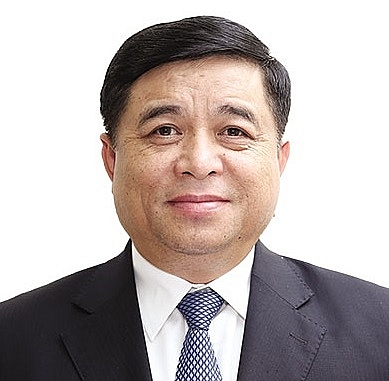
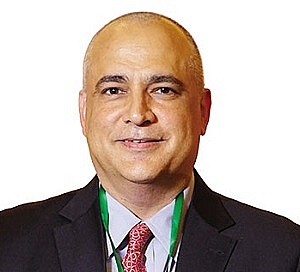



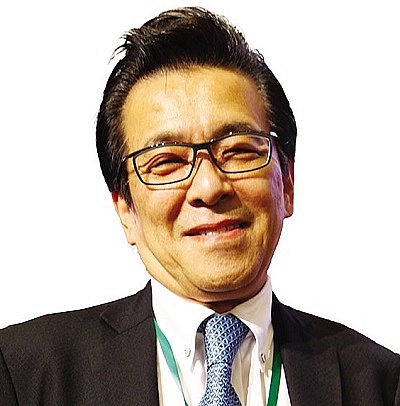
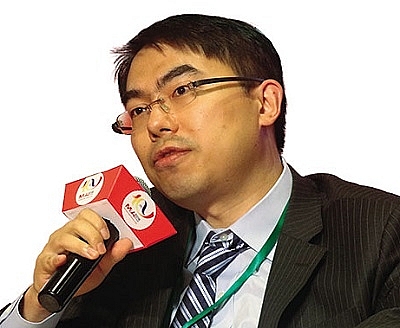























 Mobile Version
Mobile Version